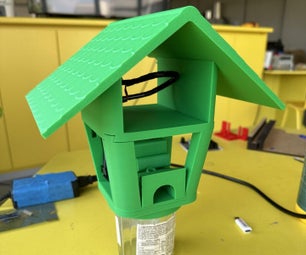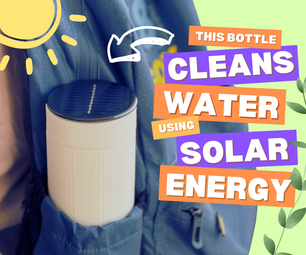Introduction: The Introduction of LM2596 Step Down Power Module DC-DC Converter
ICStation Team share this LM2596 Step Down Power Module with you in details. We will introduce the features,scope of application,diagram,and testing results.We use the digital storage oscilloscope to test the module and show you the actual testing results with pictures.You will have a full understanding of this module.
Features
1.With voltage meter display;voltage meter error of ±0.1V;the range among 0~40V. (note: to ensure the voltage meter accuracy, please make sure that the input voltage is 4.2V or more).
2.Voltage meter can be closed by long pressing button(minimum power loss).
3.The range of input voltage is 4.2~40V and output voltage is1.25V~37V ,which are continuously adjustable.(The input voltage must 1V higher than output voltage)
4.Maximum output current can be as high as 3A,but normal and stable working current is2A.
5.Use 150KHZ internal oscillation frequency,which is belong to the second generation of switch voltage regulator with low consumption and high efficiency.
Where to use:
1.experiment teaching
2.temporarily set up power supply in the outdoor
3.car(audio, electric fan)power supply
What is special:
LM2596 Step Down Power Module design based on XL2596 as main control chip,attached digital tube to display voltage at that time to highlight smart function. What’more, schottky diode provides protection of reverse connection.
What components and tools do you need to do the test:
Copper Wire
Copper Cylinder
Nut
Pin Header
Screw Driver
Power Connector
Features
1.With voltage meter display;voltage meter error of ±0.1V;the range among 0~40V. (note: to ensure the voltage meter accuracy, please make sure that the input voltage is 4.2V or more).
2.Voltage meter can be closed by long pressing button(minimum power loss).
3.The range of input voltage is 4.2~40V and output voltage is1.25V~37V ,which are continuously adjustable.(The input voltage must 1V higher than output voltage)
4.Maximum output current can be as high as 3A,but normal and stable working current is2A.
5.Use 150KHZ internal oscillation frequency,which is belong to the second generation of switch voltage regulator with low consumption and high efficiency.
Where to use:
1.experiment teaching
2.temporarily set up power supply in the outdoor
3.car(audio, electric fan)power supply
What is special:
LM2596 Step Down Power Module design based on XL2596 as main control chip,attached digital tube to display voltage at that time to highlight smart function. What’more, schottky diode provides protection of reverse connection.
What components and tools do you need to do the test:
Copper Wire
Copper Cylinder
Nut
Pin Header
Screw Driver
Power Connector
Step 1: Function Introduction
Step 2: Diagram
Step 3: Testing Results:Input Voltage 4.5V
Because the starting voltage is 4.2V, when testing you should set the input voltage 4.5V and the output voltage 1.4V. ICStation Team test it on the digital oscilloscope and the result shows that the actual testing of the product is in accordance with the description.
Step 4: Testing Results:Input Voltage 30V
Because the maximum voltage is 33V,when testing you should set the input voltage 30V and the output voltage 28.6V.The actual measured data is lower than set data of around 0.6V.This may be caused by the output voltage is close to the input voltage or poor power supply accuracy.
In general, the performance of LM2596 Step Down Power Module is very good.You had better set the output voltage 3~4V lower than the input voltage, then the testing results will be more stable.
Thank you for your visiting! Please feel free to share us your comments. :)
Should you meet any problem, please feel free to contact us.
ICStation Team
In general, the performance of LM2596 Step Down Power Module is very good.You had better set the output voltage 3~4V lower than the input voltage, then the testing results will be more stable.
Thank you for your visiting! Please feel free to share us your comments. :)
Should you meet any problem, please feel free to contact us.
ICStation Team











